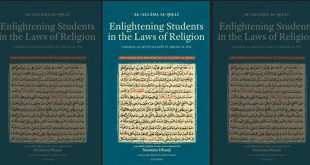Throughout Shiʿi history, scholars (ʿulamāʾ) have been trying to answer the following question: in the absence of the Prophet and the Imams, how is sure knowledge (ʿilm) derived?
As the duty of producing an answer to this question became the responsibility of scholars, the limits of their authority also came into question. This paper argues that the Shiʿi tradition of producing knowledge and justifying clerical authority consists of a tripartite system rooted in the texts, reason, and mysticism. In other words, Shiʿi socio-intellectual activity was built on the foundational texts (Qurʾan and hadith), rational thought, and mystical experience (including intuition and dreams). These three sources have caused inter-scholastic divisions since most scholars have categorically rejected one or more of these sources. Some scholars, however, have accepted a synthesis of the three sources. The following illustrates that appeals to these three sources of knowledge and authority have been made in each major period of Shiʿi thought. As a result of a broad reading of Shiʿi intellectual activity, this paper suggests that scholarly appeals to the three sources are historically consistent.
The fourteenth-century Baghdadi scholar, Sayyid Ḥaydar Āmulī, was one of the first to synthesize the three sources in his theoretical approach to knowledge. He argues that the way of the philosophers (ʿaql), the tradition of the theologians (naql), and the intuition of the mystical theosophists (kashf) are the three parts of metaphysics.1 Moreover, in his Risālah fī Maʿrifāt al-Wujūd, Āmulī claims that these sources are the methods of attaining knowledge, but only kashf leads to divine reality.2 In other words, Āmulī accepted all three sources, but favoured kashf.
Historically, mainstream scholars were often defined by their approach to textualism, rationalism, and mysticism. Akhbārīs emphasized a textualist approach, while Uṣūlīs have become synonymous with those who accept reason. Scholars who emphasized mysticism as a source of knowledge and authority are generally known as theosophists (ḥikmat al-ilāhiyyah) or illuminationists (ishrāqiyyah). During the critical post-Safavid period, three schools of thought competed as representatives of each knowledge source: Akhbārīs, Uṣūlīs, and Shaykhīs (who preferred to be called Kashfiyyah (Intuitionists)). Although these schools developed into competing socio-intellectual movements, the divisions between them may not be as rigid as is often assumed. The following, therefore, will emphasize both the convergences and divergences that connect and disconnect the three sources of knowledge and authority. Since scholars in one school often borrow from the other schools, we should be wary of imposing rigid divisions between the three trends in Shiʿi thought.
 Ijtihad Network Being Wise and Faithful Muslim in the Contemporary World
Ijtihad Network Being Wise and Faithful Muslim in the Contemporary World

